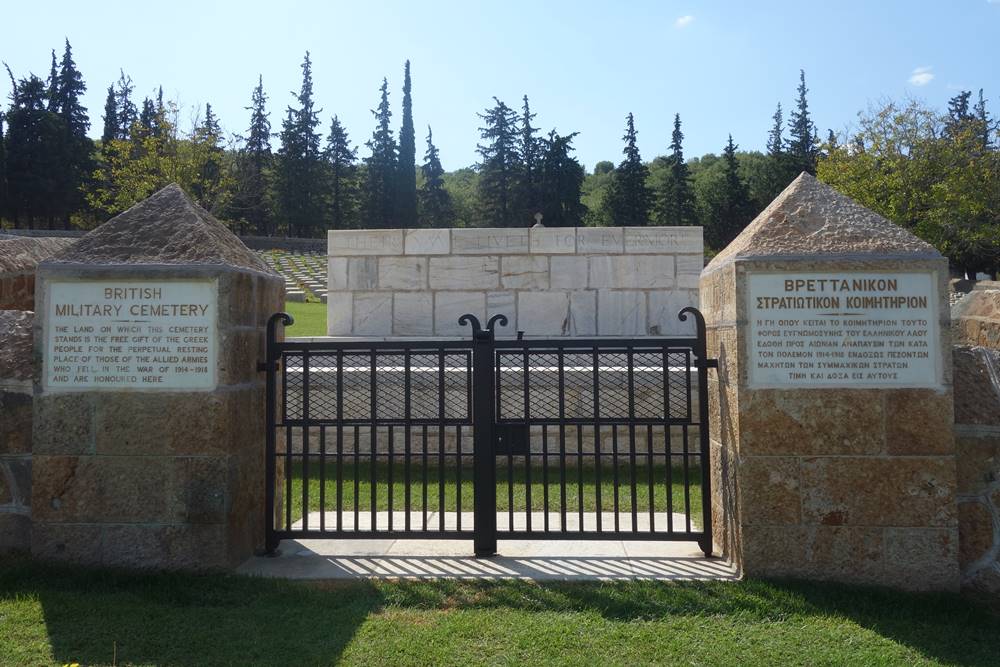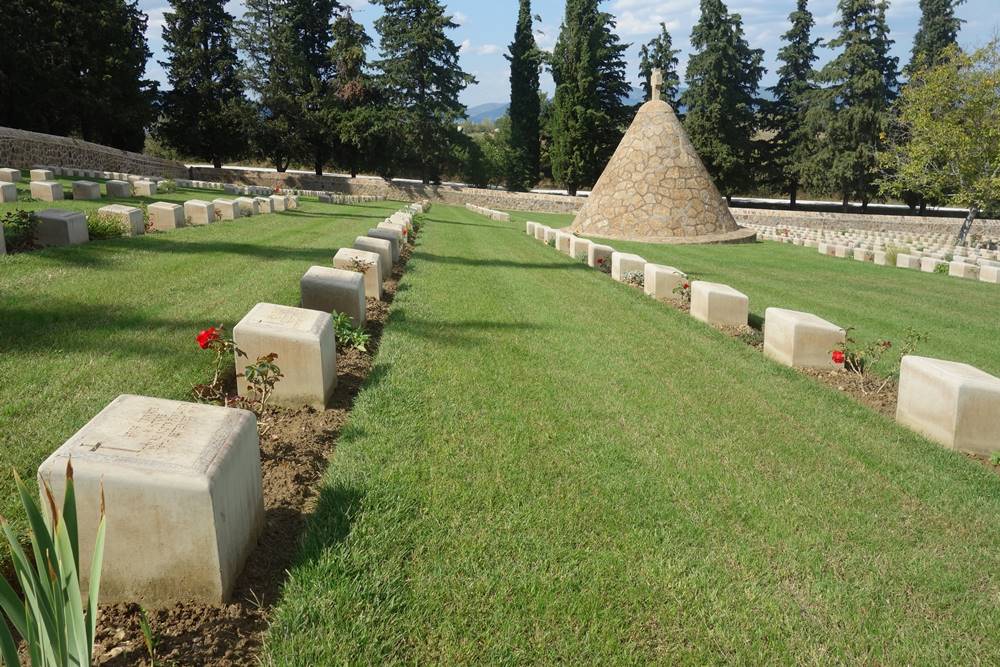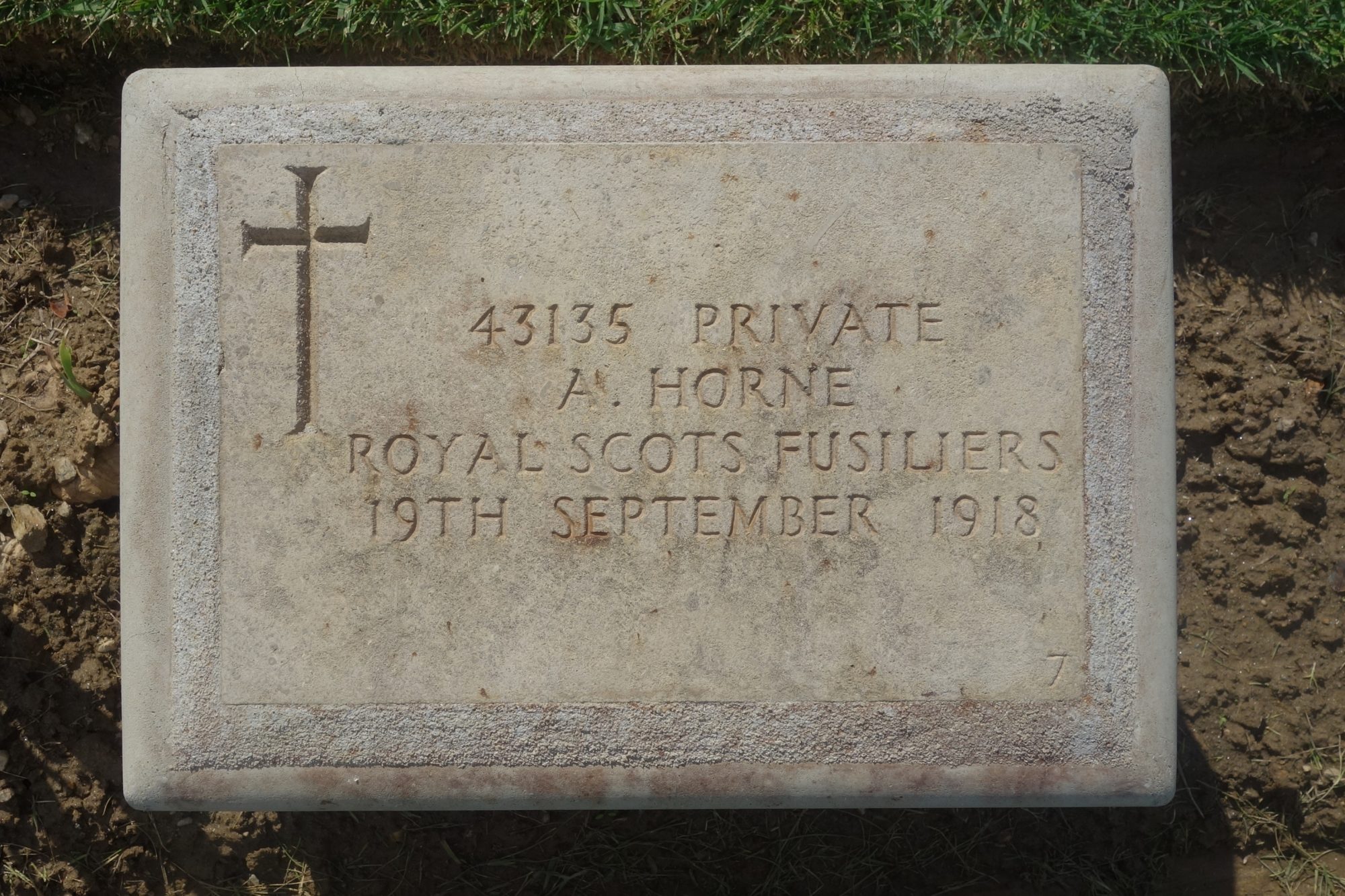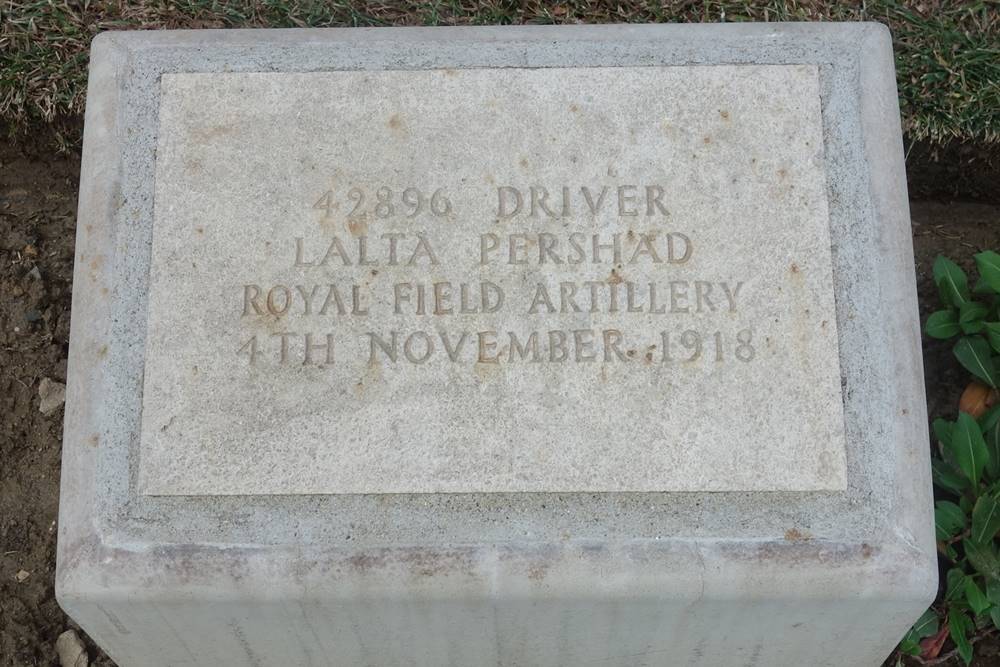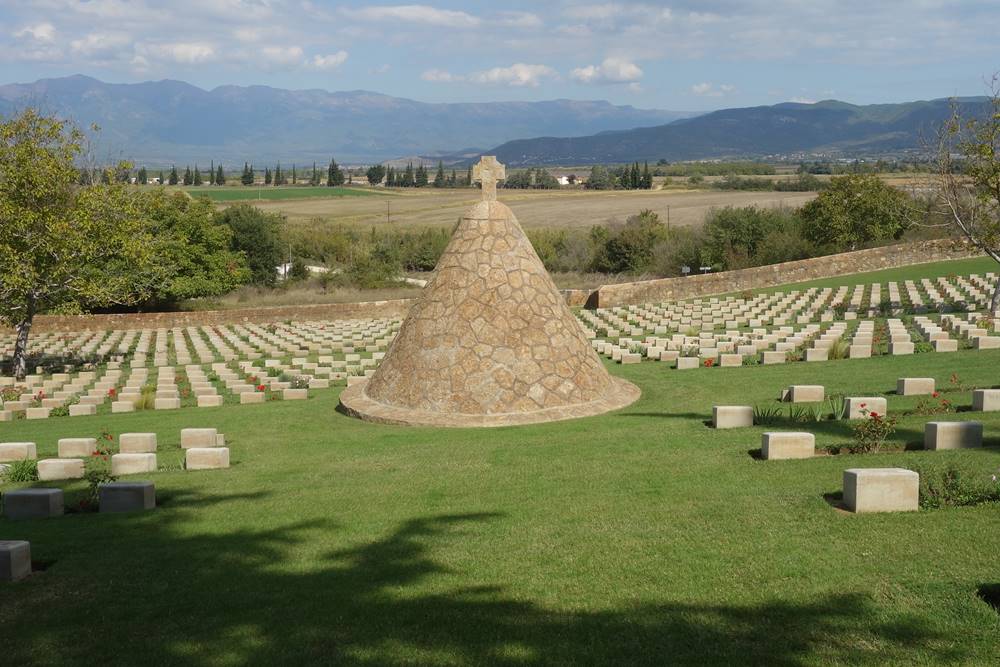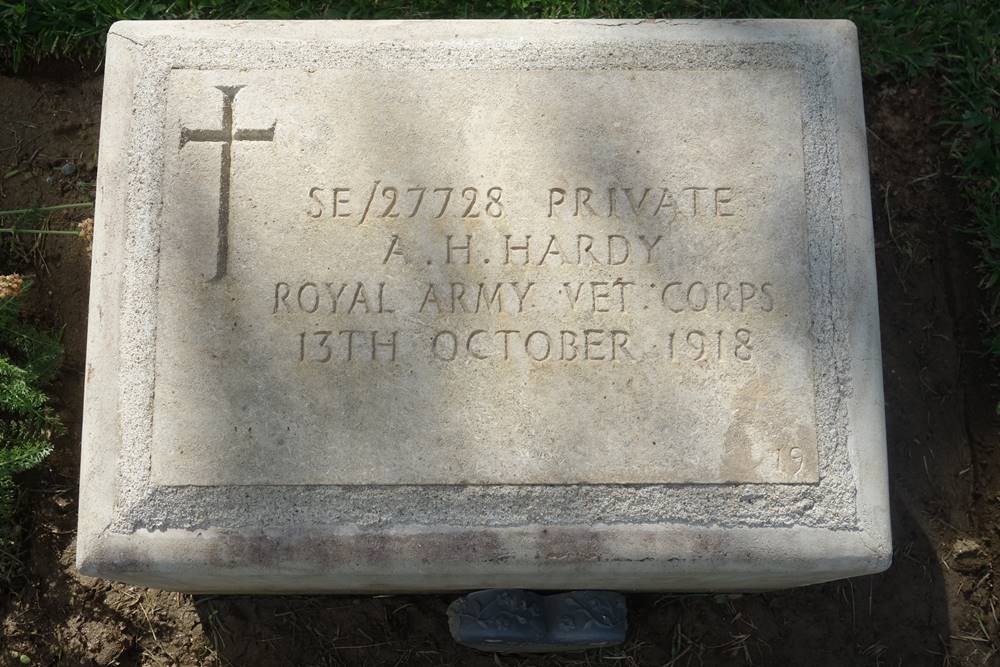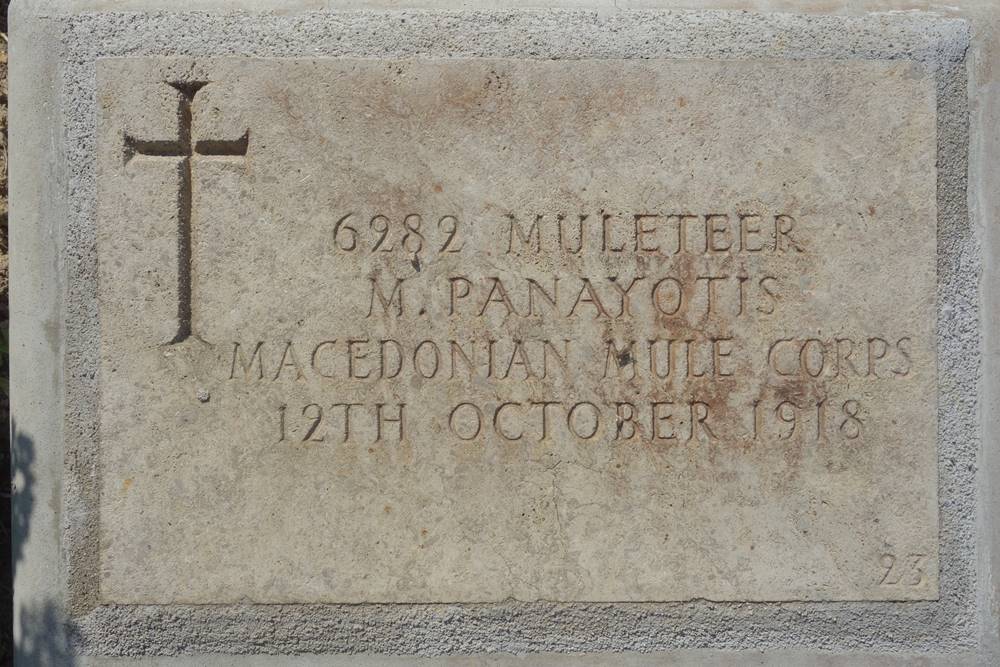This page on the Doiran Military Cemetery is one of a series of articles on the Salonika Campaign which can be viewed by clicking on the link below. I’ve also created a series of guides to help you research soldiers who served in the war:
- The Salonika Campaign
- Guides to Researching Soldiers who Served in the British Army
The Doiran Military Cemetery
The Doiran Military Cemetery is located in northern Greece, close to the border with the Republic of North Macedonia. The nearest village is Doirani and the cemetery is a short walk away, down a well maintained and signposted track. This track is suitable for vehicles and parking space is available in front of the cemetery. During the campaign, this part of the British Line was known as Colonial Hill and the cemetery was created on its reverse slope. Originally, the cemetery was known as Colonial Hill Cemetery No.2. After the war, it was used to concentrate battlefield burials and smaller cemeteries in the area, including the Strumnitza British Military Cemetery. The top of the hill was chosen as a site for the Doiran Memorial which can be seen from miles around.
The cemetery is one of a number of First World War cemeteries scattered across Greece and contains the graves of over 1300 soldiers who died serving with the British Army. There are also a small number of graves to Greek soldiers and a single grave to a French soldier. A small French cemetery can be found further up the path on the way to the Doiran Memorial. Compared to the cemeteries on the Western Front, Greek First World War cemeteries only receive a trickle of visitors. A plaque on the entrance announces to the visitor in English and Greek that “The land on which this cemetery stands is the free gift of the Greek people for the perpetual resting place of those of the Allied armies who fell in the war of 1914-1918 and are honoured here”.
There is no Cross of Sacrifice in the cemetery which is usually found in Commonwealth War Graves Commission cemeteries containing more than forty burials. Instead, there is a cairn cross which can be seen in the above photograph. There are no headstones like those encountered on the Western Front as plaques cemented into stone blocks are used instead. This is probably on account of the slope of the ground which would cause larger headstones to topple over. No regimental or corps badge is shown on the graves. The grave below is a typical example of those found in the cemetery, though many contain epitaphs.
Private Andrew Horne was killed in action on 19 September 1918 during the failed British and Greek attack on Bulgarian positions during the Third Battle of Doiran. Many of the graves in the cemetery date from this attack which occurred just prior to Bulgaria requesting an armistice. Andrew was serving with the 8th Battalion Royal Scots Fusiliers when he was killed, along with about seventy other soldiers of the unit on 19 September. He had enlisted at Kirkcaldy in Scotland and had served in the Gallipoli Campaign with the 1st Battalion King’s Own Scottish Borderers. Andrew hasn’t been forgotten by his family who visited his grave in 1986 and I took the photograph for a descendent.
Driver Lalta Pershad is the only Indian soldier buried in the Doiran Military Cemetery. He died on 4 November 1918 while serving with the Royal Artillery. Indian soldiers were often used as Drivers in British artillery units and their graves are found in cemeteries across the world. Often, like Lalta Pershad, they will be the only Indian soldier buried in a cemetery. Unfortunately, due to the destruction of Indian service and medal records, there’s no way to research him. When he died, Lalta was serving with the XVI Corps Ammunition Column.
The view below is looking from the cemetery towards Lake Dojran (Doiran) which is just out of shot behind the treeline on the left. The area is mostly farmland and the white building to the right of the cairn’s cross is Doirani train station. The track runs along the route of the Salonika and Constantinople Railway with the old Dojran station found in Doirani, just past the border post. The mountainous terrain is typical of the area.
Private Albert Henry Hardy of the Royal Army Veterinary Corps is also buried in the cemetery. Unfortunately, no service record survives for Albert so there’s only limited information available. Without a service record, soldiers who served in the Royal Army Veterinary Corps are often impossible to research as no documentation survive recording the units they served with.
Albert had enlisted at Birmingham and was serving with the 18th Veterinary Hospital when he died, most likely from disease. Spanish flu is a possibility as it swept through the area killing hundreds of Allied soldiers. Albert’s entry in the Army Registers of Soldiers’ Effects, 1901-1929 shows he died in the 25th Casualty Clearing Station. The little heart placed by the headstone reads “In memory of Albert Henry Hardy SE/27728 visited by his grandchildren in June 2019 from England and Canada”.
Also buried in the cemetery is Muleteer M. Panayotis of the Macedonian Mule Corps who died on 12 October 1918. At the time of his death, Panayotis was serving with the 84th Field Ambulance, a mobile medical unit of the Royal Army Medical Corps. The unit was formed in 1916 and over 12,000 men served it it, mostly recruited from Cyprus.

